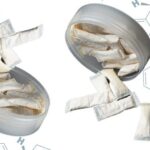Cosmetic Labelling Requirements in Canada
By: Deeksha Chahal, JUNIOR REGULATORY AFFAIRS ASSOCIATE, email
In Canada, cosmetic labelling requirements are in place to provide consumers with essential information and protect their health. Understanding labelling regulations is crucial for cosmetic manufacturers, retailers, and consumers alike. Let’s delve into the key aspects of labelling requirements for cosmetics sold in Canada.
Applicable Regulations
Labelling requirements for cosmetics are outlined primarily in the following regulations guide:
- the Food and Drugs Act and the Cosmetic Regulations
- the Consumer Packaging and Labelling Act and Consumer Packaging and Labelling Regulations
The Food and Drugs Act and the Cosmetic Regulations mandate the classification and labelling of cosmetics, ensuring to address the standards of product safety, composition and advertising. Furthermore, the Cosmetic Regulations also stipulate some specific warning and symbols that need to be appear for the products under pressurized containers categories.
The Consumer Packaging and Labelling Act and Regulations prescribe essential information that must appear the label of a cosmetic product. This Act and Regulations also address false or misleading representation of the cosmetic product.
Understanding Labelling Terms
There is certain information that must appear on the label; to understand the specifics of these requirements, we have to be familiar with key labelling terms such as:
Principal Display Surface
Per the Consumer Packaging and Labelling Regulations, there are six cases:
- For containers that have a side or surface that is displayed or visible under customary conditions of sale or use, the principal display surface is the total area of such a side or surface, excluding the top.
- For containers whose lid is the part that is displayed or visible under normal or customary conditions of sale or use, the principal display surface is the total area of the top surface of the lid.
- For containers that do not have a particular side or surface that is displayed or visible under customary conditions of sale or use, the principal display surface is any 40 percent of the total surface area of the container, excluding the top and bottom, that can be displayed or is visible under customary conditions of sale or use.
- For bags with sides of equal dimensions, the principal display surface is the total area of one of the sides.
- For bags with sides of unequal dimensions, the principal display surface is the total area of one of the largest sides.
- For containers that are wrappers or confining bands so narrow in relation to the size of the product they contain that the wrapper or band is not considered to have a side or surface that is displayed or visible under customary conditions of sale or use, the principal display surface is the total area of one side of a ticket or tag that is attached to the container.
Principal Display Panel
The part of the label that:
- for containers mounted on a display card, is applied to all or part of the principal display surface of the container, or to all or part of the side of the display card that is displayed or visible under normal or customary conditions of sale or use, or to both such parts of the container and the display card;
- for ornamental containers, is applied to all or part of the bottom of the container, or to all or part of the principal display surface, or to all or part of a tag that is attached to the container; and
- for all other containers, is applied to all or part of the principal display surface.
Inner Label
Inner label means “primary packaging material label” means any tag, brand, mark, pictorial or other descriptive matter, written, printed, stencilled, marked, embossed or impressed on, or attached to, a package (container) of a cosmetic product.
Outer Label
The outer label is often described as the carton label (i.e., a label on a box containing a bottle of a cosmetic). Any product packaged in a container that is sold to, used, or purchased by a consumer without being repackaged.
Information that needs to appear on the Principal Display Panel
Product identity: The identity of a cosmetic product must be evident to the user when purchasing it. The product name presented on a label must appear in such a manner that it can be easily read in both English and French language.
Net quantity (in metric units): The declaration of net quantity must appear in both English and French on the principal display panel. For example, if you state “Net Weight” 250 g or “Net Wt 250 g” you must also state “Poids Net 250 g. “. However, you can also just go with “250 g” and avoid the additional wording altogether. It is important to note that there needs to be a space between the value and the unit of measurement (“250 g” and not “250g”).
Other information that needs to appear on a Cosmetic Product Label
Manufacturer/Canadian Dealer Details: The name and address of the manufacturer or Canadian dealer must be prominently displayed on the OUTER surface of the packaging in English, French, or both languages.
Warning and Cautionary Statements: Products associated with any avoidable hazards must include clear warnings on the label, outlining how to mitigate risks through proper usage. These warnings may include instructions for use, cautionary statements, symbolic representations, etc. All warnings must be provided in both English and French.
Ingredient Listing: Ingredients present at concentrations exceeding 1% must be listed in descending order of predominance. Ingredients with concentrations below 1% can be listed in any sequence following those with concentrations exceeding 1%. Health Canada regulations allow only INCI names, so that consumers in Canada needs to know a single name for an ingredient instead of multiple technical names. Fragrances or flavors should be denoted as “Parfum” or “Aroma.” Coloring agents should be identified by their CI numbers or color names (previously FD&C names). Ingredients listed in the schedule of the Cosmetic Regulations (Appendix 1) may be indicated by their EU trivial names, or either appropriate English and French equivalents. The term “Ingredients” should be translated such as “Ingredients/Ingrédients” at the beginning of the listing. Learn more about the ingredient declaration and other ingredient requirements in the 2024 Updates to the Canadian Cosmetic Regulations.
Requirement of Bilingual labels and Manufacturing/ Distributor Addresses
While Federal regulations do not necessitate all labelling information to be in French, if a company intends to market a cosmetic product in Quebec, then everything on the product labels must include both the English and French languages in equal prominence for font and size. Furthermore, each product should include the name and address of its manufacturer or distributor; on the outer label.
How Dell Tech Can Help with Cosmetic Labelling in Canada
In summary, all this detailed information on a cosmetic product label allows customers to make informed decisions about the products they are willing to purchase. Consumers can also identify the cosmetics that they may be sensitive or allergic to with the help of ingredient labels. Therefore, navigating the labelling requirements for cosmetics sold in Canada is essential for manufacturers, retailers, and consumers to ensure product safety and transparency.
Our team is happy to assist you with ensuring your cosmetic products have compliant labelling.
Learn more about cosmetic testing and how to ensure safety and quality of your products here.







